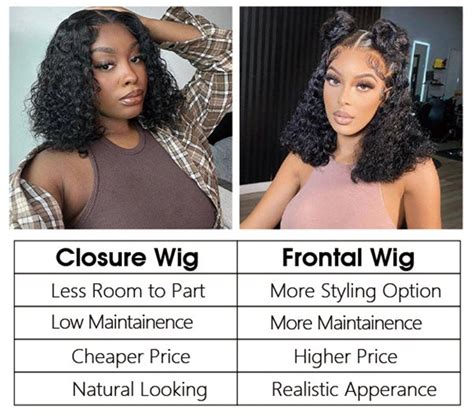Choosing between a frontal and a closure can be a daunting task, especially for those new to the world of hair extensions. Both options possess unique benefits and drawbacks, determining which one aligns perfectly with your specific hair goals and preferences is crucial.

Frontal vs Closure: An In-Depth Analysis
-
Construction: A frontal is a piece of hair that runs from ear to ear, providing complete coverage across the front of your head. It mimics your natural hairline, allowing for versatile styling options. A closure, on the other hand, is a smaller piece that covers only the top of your head, creating a part.
-
Hair Usage: Frontals require more hair to create a natural look, typically ranging from 12 to 16 inches. Closures, due to their smaller size, utilize less hair, generally between 8 and 12 inches.
-
Versatility: Frontals offer unparalleled versatility, as they can be styled like your natural hair in various ways, including buns, ponytails, and braids. Closures provide limited styling options due to the pre-determined part.
-
Natural Look: Both frontals and closures can achieve a natural look when installed correctly. However, frontals provide a more seamless blend, eliminating the possibility of visible tracks or partings.
-
Cost: Frontals are typically more expensive than closures due to their larger size and the additional hair required. Closures offer a more affordable option, making them suitable for budget-conscious individuals.
Which Option is Right for You?
-
Preferred Style: If versatility and a natural hairline are your priorities, a frontal is the ideal choice. For those seeking a more affordable and low-maintenance option, a closure may suffice.
-
Budget: Compare the prices of frontals and closures to determine which option aligns best with your financial capabilities.
-
Hair Type and Density: Consider your natural hair type and density. If you have thick hair, a frontal may be necessary to achieve a seamless blend. If your hair is thinner, a closure can provide adequate coverage.
-
Maintenance: Frontals require more maintenance due to the larger surface area. Closures are easier to manage, making them a better choice for those with busy schedules.
Tips and Tricks
-
Consider a professional installation: Improper installation can lead to damage or discomfort. Seek the services of an experienced stylist to ensure a flawless application.
-
Choose high-quality hair: Opt for hair from reputable sources to avoid shedding and tangling.
-
Protect your investment: Follow proper care instructions to extend the lifespan of your hair extensions.
Pros and Cons Comparison Table
| Feature | Frontal | Closure |
|---|---|---|
| Coverage | Ear-to-ear | Top of head |
| Versatility | High | Limited |
| Styling Options | Wide range | Restricted |
| Natural Look | Seamless | Noticeable part |
| Cost | Higher | Lower |
Economic Impact
According to the American Hair Loss Association, the hair extensions market is projected to reach a staggering $13 billion by 2027. The increasing demand for non-surgical hair enhancements, including frontals and closures, has contributed to this robust growth.
Customer Testimonials
“My frontal has completely transformed my look. I love the endless styling possibilities and the confidence it gives me.” – Sarah J.
“As a busy mom, the closure is perfect for me. It’s affordable, easy to maintain, and still gives me the coverage I need.” – Jessica W.
Conclusion
Understanding the key differences between frontals and closures is essential for making an informed decision. Whether you prioritize versatility, affordability, or low maintenance, both options offer unique advantages. By considering your individual needs and preferences, you can confidently choose the hair extension that empowers you to embrace your hair journey with ease and style.
